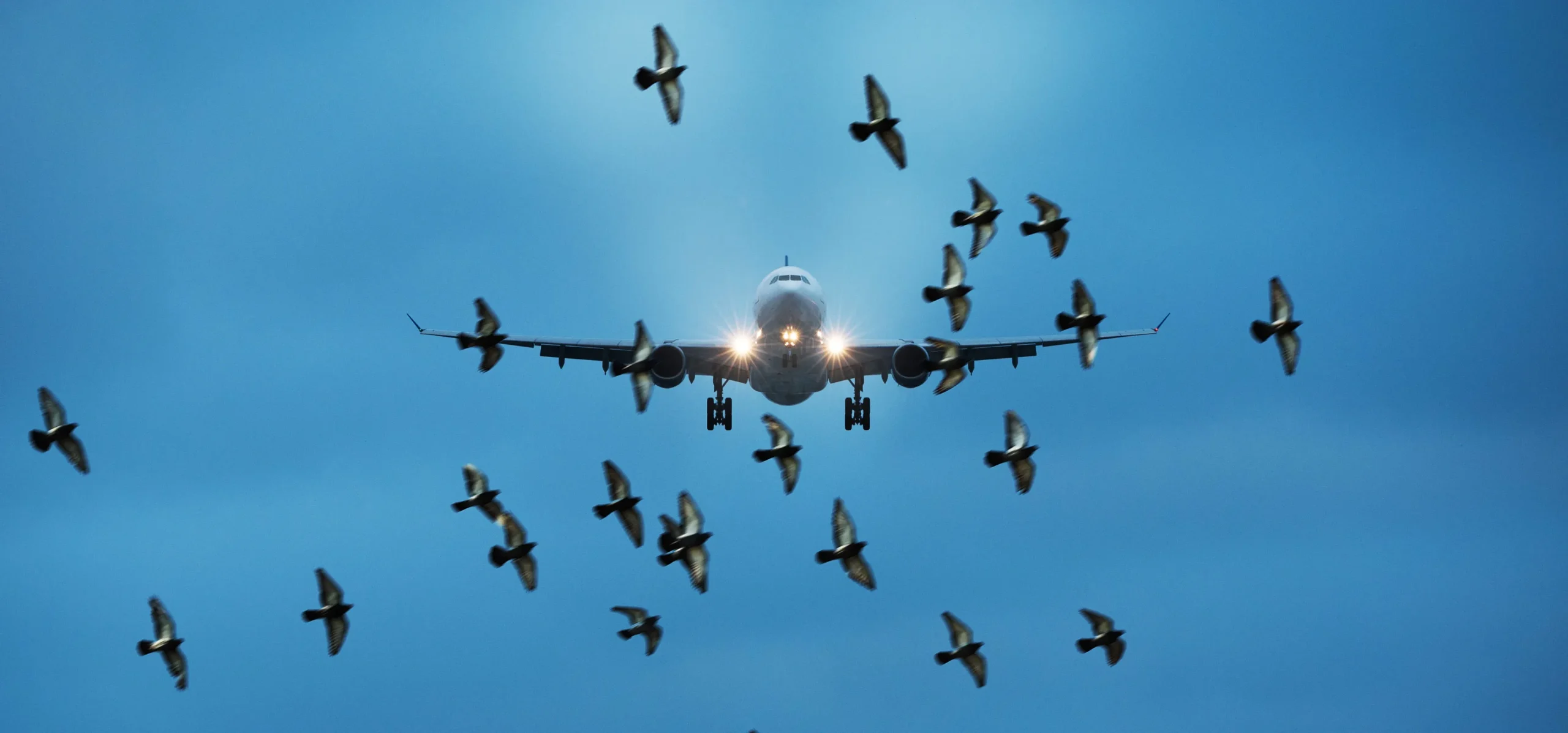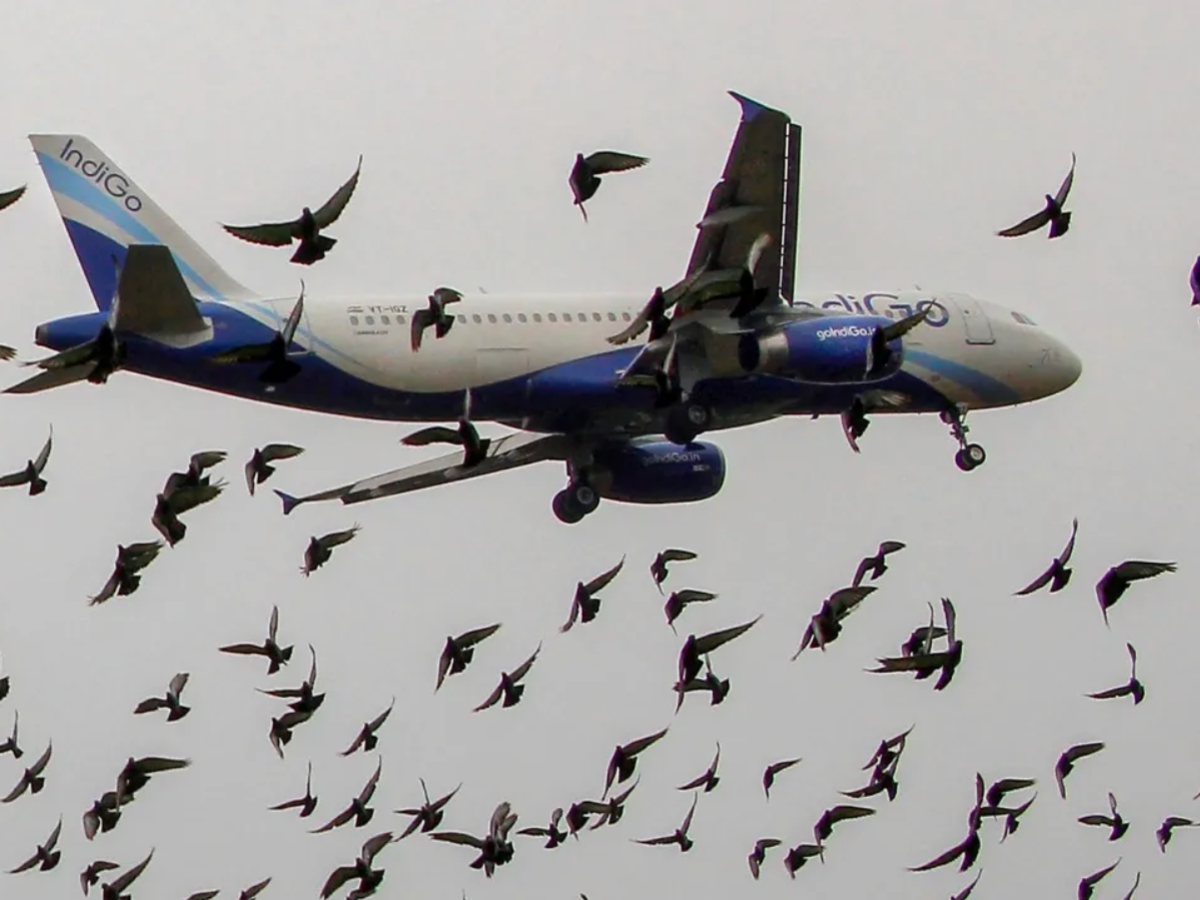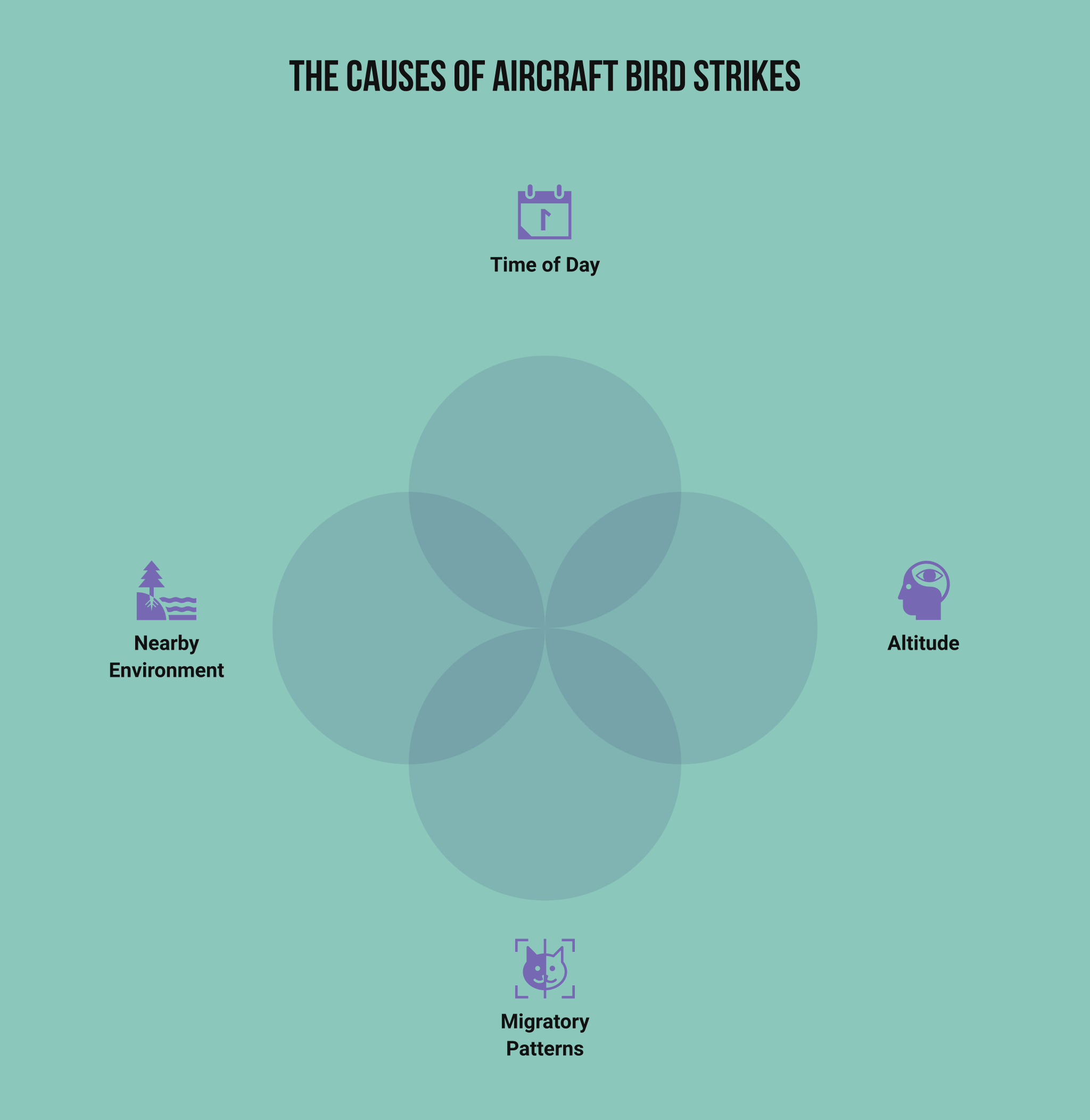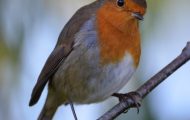Do you want to know how to prevent bird strikes on aircraft? Travel is now quicker and more convenient because of the marvels of contemporary aviation, which have united the world in ways that were before unthinkable. But as they fly through the air, airplanes coexist with various species, including birds. A major safety concern is the potential for bird strikes, in which a bird collides with an aircraft.
Bird strikes can result in structural, engine, and system damage to the aircraft, risking the lives of passengers and crew and incurring significant financial expenditures. A mix of technology developments, legal restrictions, and environmental management techniques is needed to effectively prevent bird strikes. To provide safer skies for everyone, we will examine the numerous strategies and solutions to reduce the risk of bird strikes on aircraft. To do this, we will emphasize the significance of cooperation among aviation specialists, wildlife biologists, and regulatory agencies.
What is Bird Strike?
A bird strike is an incident in the field of aviation that occurs when an aircraft collides with a bird or a group of birds. The collision of birds with aircraft can lead to substantial harm, necessitating expensive repairs, flight schedule disruptions, or even the need for unscheduled landings in emergencies.
Although bird strikes may pose a lower level of risk compared to other hazards in aviation, it is imperative to implement preventive measures to safeguard aircraft and their occupants from potential dangers. Bird strikes in the United States incur significant financial losses for the aviation sector, amounting to several hundred million dollars annually. Implementing preventive measures can effectively mitigate expenses and avert unwarranted harm to aircraft.
Birds Most Commonly Involved in Collisions

The avian species and dimensions implicated in avian collision incidents exhibit regional variations. Birds of various dimensions have the potential to cause bird strikes; however, avian species of considerable size, such as geese, seagulls, and cranes, can inflict more significant harm to aircraft and consequently pose a heightened risk to aviation safety.
Over the past few decades, there has been a notable upward trend in the avian population within the United States, thus leading to an elevated susceptibility to bird strike incidents. The population of Canadian geese has experienced a threefold increase, augmenting the potential hazards posed to airplanes due to their enlarged physical dimensions.
How to Prevent Bird Strikes on Aircraft

Mitigating bird impacts on airplanes is a critical safety consideration in aviation. Avian collisions with airplanes can cause significant damage to the aircraft structure, jeopardizing the safety of both passengers and crew members. The following are several tactics and procedures that can be implemented to mitigate the occurrence of bird strikes.
➤Ground-Level Responsibility
Airports play a big part in averting potential attacks. For instance, the authorities at London Heathrow Airport fund studies to learn more about the local bird species and how they react to various deterrents. The airport uses certain techniques to manage the ecosystem. For instance, it maintains the grass on the airfield at six to eight inches to deter birds from using it as a shelter. To protect natural life, the site’s administrators have also implemented programs to handle biodiversity in the surrounding areas.
Distress cries are frequently broadcast over airport speakers, which can repel birds. They also cover plain waters to keep animals away. Systems for managing insect populations are among other aspects that must be taken into consideration within the food chain. Aviation organizations collaborate closely with wildlife institutions to encourage animals to live elsewhere.
➤Numerous Factors
In Europe and North America, most strikes, exceeding two-thirds, occur during nocturnal hours. Approximately one-third of these incidents occurred during the aircraft’s approach phase, slightly less than one-third occurred during takeoff, and slightly more than one-quarter transpired while landing.
The animals hit in these situations are not the only ones at risk. Operations may be impacted, and in certain cases, the impact may result in serious damage. Since 1988, wildlife-related incidents have resulted in the deaths of over 290 people. Additionally, handling the matter may be expensive. For instance, these problems have cost the US civil aviation sector $650 million annually. Airlines, crew, & airports must ensure that the proper safeguards are in place to lower risk given the circumstances at play.
➤Several Variables
Senior Airbus A 350 training captain, Captain Chris, recently spoke with Simple Flying on how pilots handle strikes. He emphasized that steps have been taken to try to stop them from happening. If one does happen, it will be handled differently based on the circumstances.
➤The initiative is the Key
Animals might still get through airport security procedures, despite them. When large birds and flocks of birds have been reported or seen near the runway, Boeing encourages crew members to consider postponing the takeoff and landing if fuel permits. Additionally, they should alert the tower and hold off on moving until the airport is in motion. The alternative option is for them to land on an unaffected runway if one is available.
Airlines are encouraged to discuss bird strikes during takeoff & approach briefings if operating in airports with suspected or known wildlife activity. Crews are recommended to plan an additional landing distance in these circumstances “to account for the potential of no thrust reverser utilized if a bird attack happens.”
Other preventative measures include avoiding or reducing movement at low altitudes to stay away from birds, which can help prevent strikes in bird hotspots. Pilots should try to limit their speed below two hundred fifty knots when flying below 10,000 feet. Additionally, they may climb at their fastest pace below 2,000 feet “to limit the flight duration exposure to strike hazard.” Airlines can also prepare by altering their services when known or anticipated wildlife activity occurs.
➤Stay Alert
Overall, most bird & animal hits don’t have a significant negative impact on operations. However, the effects can accumulate over time, and prevention is the only approach to avert any potentially harmful outcomes. Various creatures have been discovered in airports recently, from boars to bears. Therefore, all parties collaborate to reduce the possibility of an animal collision during aircraft operations.
How to Manage the Risk of Bird Strikes

Bird attacks at airports are a prevalent and frequently incapacitating issue that airports consistently confront. In the context of smaller aircraft, it is noteworthy that a collision with a bird can significantly harm several components, including windscreens, engines, and the overall structural soundness of the aircraft. Even larger aircraft are not exempt from this concern, as birds that get sucked into the engine can lead to various problems, perhaps resulting in loss of control in more extreme instances.
🐦Habitat Adjustments
The ecosystem surrounding the airport is one strategy airports use to reduce the possibility of strikes. The strategy seeks to deter birds from breeding, making the habitat less appealing. Airports accomplish this by eliminating food supplies, netting surrounding water sources like ponds, and cutting grass as short as possible (so birds can’t use it as a cover). If done correctly, the birds will need more resources for ongoing nesting and will be encouraged to move and find another location.
To disturb the environment and make the location less appealing to birds, you can also employ predator calls, lasers, & noise generators. The birds may eventually return to the region when the disruption stops, making this less effective over time.
🐦The Bird Strike Issue
It’s natural to assume that airport noise, a steady stream of travelers, and other disruptions would drive birds away. But regrettably, this is not the case. Because of their position, surrounding environment, and lack of natural dangers to their habitat, airports are attractive to birds.
Since airports are frequently found on the outskirts of sizable urban areas, numerous birds are compelled to settle there because it is the only available region of unused land for kilometers. Numerous predators are deterred from the area by the nearly continual commotion of flying overhead, making it simpler for birds to build a nest without fear. Additionally, because many airports get surrounded by wetlands that absorb the noise, birds naturally flock to the region, making it a beacon for them.
Airports must take all necessary precautions to prevent crashes since birds pose a significant risk to aviation. Here are some steps airports take to reduce the likelihood of bird strikes.
🐦Radar Tracking for Bird Detection
A bird detection radar is a more efficient way to address bird hazards. Bird tracking radar operates continuously, unlike manual observation. Therefore, it offers complete tracking assurance no matter the conditions, the time of day, or the location. It also provides airports with more knowledge and information about flight paths & migration routes, enabling them to quantify recurrent trends in bird behavior.
The best radars are expected to automatically classify and log birds, which is crucial for tracking their movements so that airports can make the necessary plans. Bird detection radar at Schipol Airport gave airport personnel the information they needed to respond quickly and reduce the likelihood of bird strikes. They can now track dangers across the entire airport in real-time and react faster than they could in the past when they had to rely on spotters’ delayed reports.
🐦Reduce the Risk of Bird Strikes
Airports need a precise, standardized, and timely technique for preventing bird strikes because the risk is here to stay. The variations among bird watchers constrain many, the lack of coverage throughout the day, and the constrained scope across the whole airport.
The risk of bird strikes will increase as airports get busier and more flights occur daily. Therefore, airports must maintain vigilance and take all necessary precautions to minimize and reduce the risk of bird strikes.
🐦Flight Changes and Surveillance
At airports, trained spotters are typically used to find and follow birds that could pose a problem. The spotters, who typically carry binoculars, are tasked with locating the birds, identifying them to flight crews, modifying their flight routes, and scattering them before they get into proximity with any aircraft.
Although this technique for tracking birds is commonly known, it needs more complexity and is far more difficult to use consistently. For instance, airports that depend on human monitoring may be unable to make precise observations if fog or mist restricts visibility. Human mistake is also probable, which can significantly slow down response times.
In addition to these problems, they discovered that manual detection & reporting could be more efficient and effective at Amsterdam Schiphol Airport. This was mostly because spotters using binoculars needed more range to cover the entire airport, leading to a lack of scope. Additionally, they discovered that it was nearly impossible to evaluate birds at night, a crucial risk factor in one of Europe’s biggest airports open both day and night.
The Causes of Aircraft Bird Strikes

Airports must prevent bird strikes due to their high costs and risks. Bird strikes increase with aircraft height, time of day, airport surroundings, and regional bird migration patterns.
👉Time of Day
Since most birds may be active during the day, bird strikes are more likely. According to the FAA, approximately a third of aircraft bird hits occur at night with low visibility.
👉Altitude
Bird strikes are more likely to occur in aircraft at lower altitudes. The majority of bird collisions with aircraft happen during landing or takeoff.
👉Migratory Patterns
Migration patterns affect bird strike danger. Due to the enormous number of birds migrating through airports for food and shelter in spring and fall, bird activity increases substantially. As birds migrate across the country in July and October, the FAA claims that over half of all bird strike events in the U.S. occur during this time.
👉Nearby Environment
Bird strike risk is affected by airport surroundings. Airport vegetation and feeders attract birds, increasing bird strike danger. Due to bird activity, airports near bodies of water and agricultural fields may have a higher bird strike risk. Airports near wildlife should take extra precautions to prevent bird and animal collisions.
Frequently Asked Questions
What occurs if a bird hits a plane?
The engines and fuselage of an airplane can sustain serious harm when a bird strikes it. The quantity and size of the birds involved, and the hit location, all affect how much damage is done.
What would happen if a bird crashed into an engine of an aircraft?
Bird strikes in engines, often known as “bird ingestion,” can have detrimental effects. Bird ingestion can substantially limit engine performance and cause significant engine damage depending on the size and species of the bird.
How frequently do birds ram into aircraft engines?
Bird strikes are a frequent risk in aviation & can happen at any point in the flight. Bird populations are more concentrated around airports at these times. However, bird strike events often occur when an aircraft has taken off or landed.
Are there more bird strikes on airplanes?
The rise in aviation traffic and the quick expansion in bird populations are the main reasons for more bird strikes in recent years. Although aircraft bird strikes have less frequent than other aviation risks, these emerging elements make it even more crucial to take precautions.
Can birds reach plane altitudes?
The majority of bird species can only fly up to 9,000 feet. Some bird species have, however, been observed to soar as high as twenty-four thousand feet! Most bird strike accidents happen at or near ground level; they are less frequent at higher elevations.
Final Thoughts
Aviation safety depends on multifaceted bird strike prevention. Technology, airport and airspace management, and pilot training can lessen bird strike risks in the aviation business. Technology, research, education, and practical actions are needed to prevent bird strikes. The aviation sector can improve flight safety and reduce bird strike risks by promoting knowledge and preparedness. I hope you found ways to prevent bird strikes on aircraft by reading this article. Thank you!



